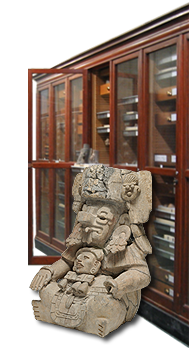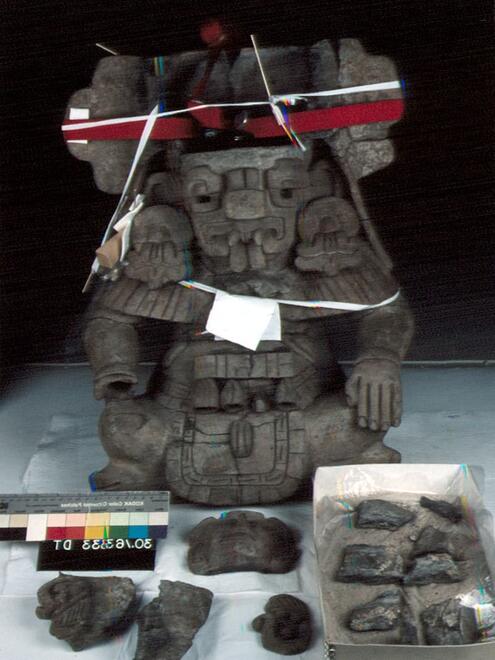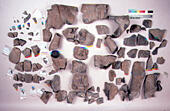


Up Close With a Zapotec Urn

Hi, I'm Lucy, and I'm at the American Museum of Natural History. Today I'm interviewing an urn made by the Zapotec people of ancient Mexico. Come with me as I ask about his not-so-humble beginnings, his amazing discovery, and the responsibilities of being an ancient artifact.

Lucy: For an artifact that's over a thousand years old, you look terrific. How do you stay in such good condition?

Zapotec Urn: I have to admit I've had some work done. When they found me over a hundred years ago, I wasn't in the best shape. After all, I had been in that tomb for over a thousand years. Plus, I was made of a kind of clay that tends to crack and break. The people who found me tried to piece me together as best they could—but let's face it, they just didn't have the technology and the know-how we have today. So I've had more work done recently.
Lucy: What did they do?
Zapotec Urn: Before they did anything, the Museum's art conservators carefully considered my history: how I was originally made, my past repairs, and how I'd been stored over time. They did chemical tests, examined me under the microscope , and even compared me to other artifacts of the period. After all this research, they came up with a plan and fixed me up.
Lucy: Did it hurt?

Zapotec Urn: The process wasn't painful, but you should've seen the bill. Ouch! They carefully cleaned off 100 years of dust, removed the old glue, separated all the pieces, and cleaned each one. Then they put me back together with the best modern materials. The whole process took many months and several experts.
Image Credits:
Lucy, Zapotec Urn, and cabinet, courtesty of AMNH / Craig Chesek; Zapotec Urn in conservation lab and in pieces, courtesy of AMNH, Division of Anthropology.




 Biodiversity
Biodiversity
 Brain
Brain
 Genetics
Genetics
 Marine BiOLogy
Marine BiOLogy
 MicrobiOLogy
MicrobiOLogy
 PaleontOLogy
PaleontOLogy
 ZoOLogy
ZoOLogy
 AnthropOLogy
AnthropOLogy
 ArchaeOLogy
ArchaeOLogy
 Astronomy
Astronomy
 Climate Change
Climate Change
 Earth
Earth
 Physics
Physics
 Water
Water
